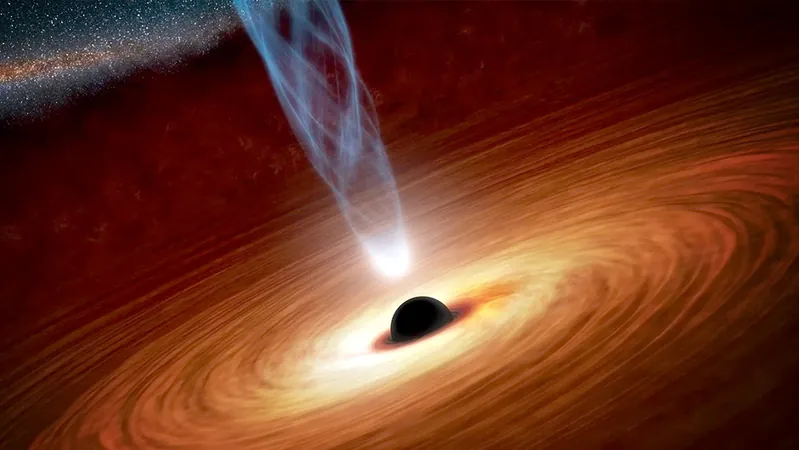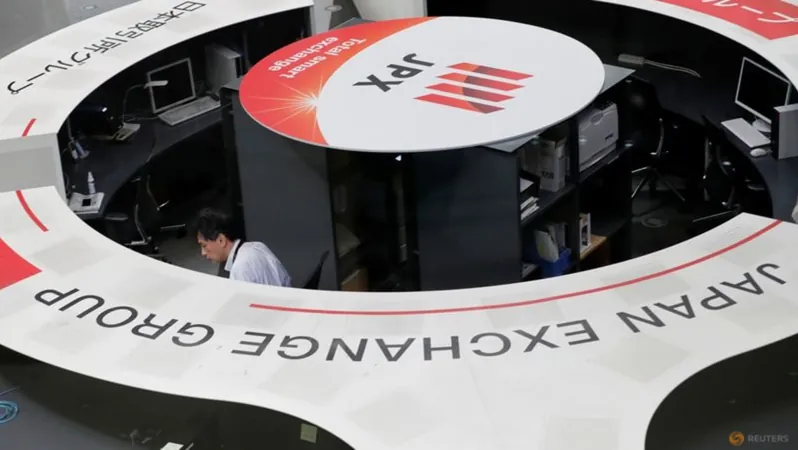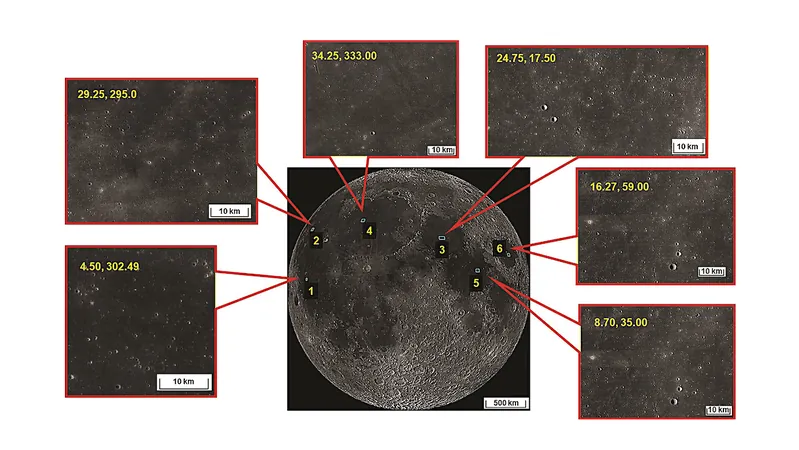
A Major Breakthrough in Black Hole Research: Meet the Visionary Astrophysicist Nico Cappelluti!
2024-10-04
Author: Wei Ling
A whimsical image of the Andromeda galaxy caught the eye of a 7-year-old boy in Rimini, Italy, igniting a lifelong passion for astronomy. That curious child, Nico Cappelluti, now a distinguished associate professor of astrophysics at the University of Miami, is making headlines for leading an ambitious project that aims to unravel the mysteries of supermassive black holes.
Cappelluti's journey from a young stargazer with an amateur telescope to a key player in cutting-edge astrophysics demonstrates the transformative power of curiosity and exploration. For nearly 20 years, he has been captivated by supermassive black holes—gravity wells with masses millions to billions times greater than our Sun. Their enigmatic origins and mechanisms of growth have puzzled scientists for decades, making them one of the universe’s greatest mysteries.
Now, as the scientific lead for the AXIS (Advanced X-Ray Imaging Satellite) project, Cappelluti is at the forefront of groundbreaking research. AXIS aims to illuminate the dark corners of the universe, focusing on the formation and evolution of supermassive black holes. “We understand how smaller black holes form from dying stars, but supermassive black holes remain enigmatic,” he explains. “We know they existed very soon after the Big Bang, yet their origins continue to baffle us.”
One of the challenges in studying black holes is their inherent invisibility; they emit no light that telescopes can detect. Instead, scientists study them indirectly by detecting X-ray emissions and radio waves from surrounding gas and material. The AXIS spacecraft, currently in development at NASA's Goddard Space Flight Center, is poised to revolutionize this field with its advanced X-ray telescope capabilities. Cappelluti and his team will be able to map and examine a multitude of supermassive black holes from the early universe, providing insights that could transform our understanding of galaxy formation.
With the aging Chandra X-ray Observatory nearing its 25th anniversary, the launch of AXIS is timely. Planned to launch from the Kennedy Space Center in 2032, the satellite is one of two proposals recently selected for further review by NASA, with each team receiving $5 million for a 12-month study. The AXIS project will offer unmatched research opportunities for students, fostering the next generation of astrophysicists.
In addition to exploring black holes, AXIS is designed to investigate the flow of gas, dust, and metals within galaxies, as well as the power sources behind explosive cosmic events. It's an ambitious mission that places performance measures at the core of modern astrophysical inquiry.
Cappelluti is not just a scientist; he is an inspiration, embodying the spirit of inquiry that NASA’s Explorers Program strives to promote. “AXIS is the instrument of my dreams,” he asserts passionately. “This project will be a milestone in my career and could significantly enhance our knowledge about the universe. The excitement in our research group is palpable as we prepare to venture into the unknown.”
As humanity traverses deeper into the cosmos, projects like AXIS could very well usher in a new epoch of astronomical discovery. Stay tuned as Cappelluti and his team set out to uncover the secrets of supermassive black holes that have eluded scientists for centuries!



 Brasil (PT)
Brasil (PT)
 Canada (EN)
Canada (EN)
 Chile (ES)
Chile (ES)
 España (ES)
España (ES)
 France (FR)
France (FR)
 Hong Kong (EN)
Hong Kong (EN)
 Italia (IT)
Italia (IT)
 日本 (JA)
日本 (JA)
 Magyarország (HU)
Magyarország (HU)
 Norge (NO)
Norge (NO)
 Polska (PL)
Polska (PL)
 Schweiz (DE)
Schweiz (DE)
 Singapore (EN)
Singapore (EN)
 Sverige (SV)
Sverige (SV)
 Suomi (FI)
Suomi (FI)
 Türkiye (TR)
Türkiye (TR)